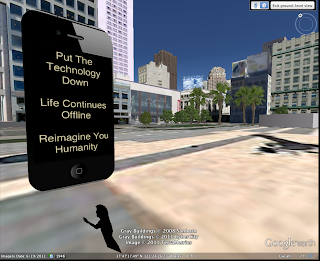Humanity Monuments Proposal
Jerry Adams
The Purpose
I propose to build a series of 16-foot monuments around the city. The monuments will be in the form of the popular techno-gadget, the Apple iPhone. Recently I observed my dependence on the iPhone and discovered I rely on it more than I should. Instead of interacting with the people and places around me I escaped into the tiny screen. I propose that we install the monuments at key parts of the city to remind people that instead of retreating into a digital world we can take in our surroundings and reimagine our own humanity outside of our technological advancements.
The Locations
There will be monuments in five different locations. The locations of the monuments will be in prime foot traffic locations. To get the full effect and largest impact the monuments must be seen by the largest amount of people.
Location 1: Market & Powell. This is a prime location with many retail shops and restaurants. Many people will see the monument and is a popular tourist area. This location will increase tourism in the area and will help to spread the word that the City of San Francisco is concerned with humanity and our connections with each other.
The rest of the locations will also have the same effect as the Market & Powell location. Location 2: AT&T Ballpark at King St and 3rd St. Location 3: Justin Herman Plaza near 1 Market. Location 4: Union Square Plaza. Location 5: On top of the Sutro Tower lookout in Twin Peaks.
The Cost
Materials:
-Concrete – 16’ x 7’ x 1.5’
-168 Square Feet/Per Monument
Cost per monument - $840
Total cost for five monuments:
$4200.00
Land Rental:
- Each monument needs 20 sq/ft for safety
- Average monthly land rental cost: $45-75
Cost per monument a month: $900-1500
Total cost for five monuments per month: $4500-7500
Three month property lease: $13,500-22,500
One Year Lease: $54,000-90,000
Other Costs:
- Truck/Install Rental: $2500
- Wood, Re-Bar, Wire, Fasteners: $500
- Misc. Supplies/Tools: $500
Total additional costs: $3500
Total Projected Costs:
- Cost Of Materials: $4200
- Land Rental: $13,500-22,500
- Other Costs: $1500
Total Projected Cost For Five Monuments:
$19,200 – 28,200 (Three Months)
$59,700-95,000 (One Year)
(Depending on Location)







